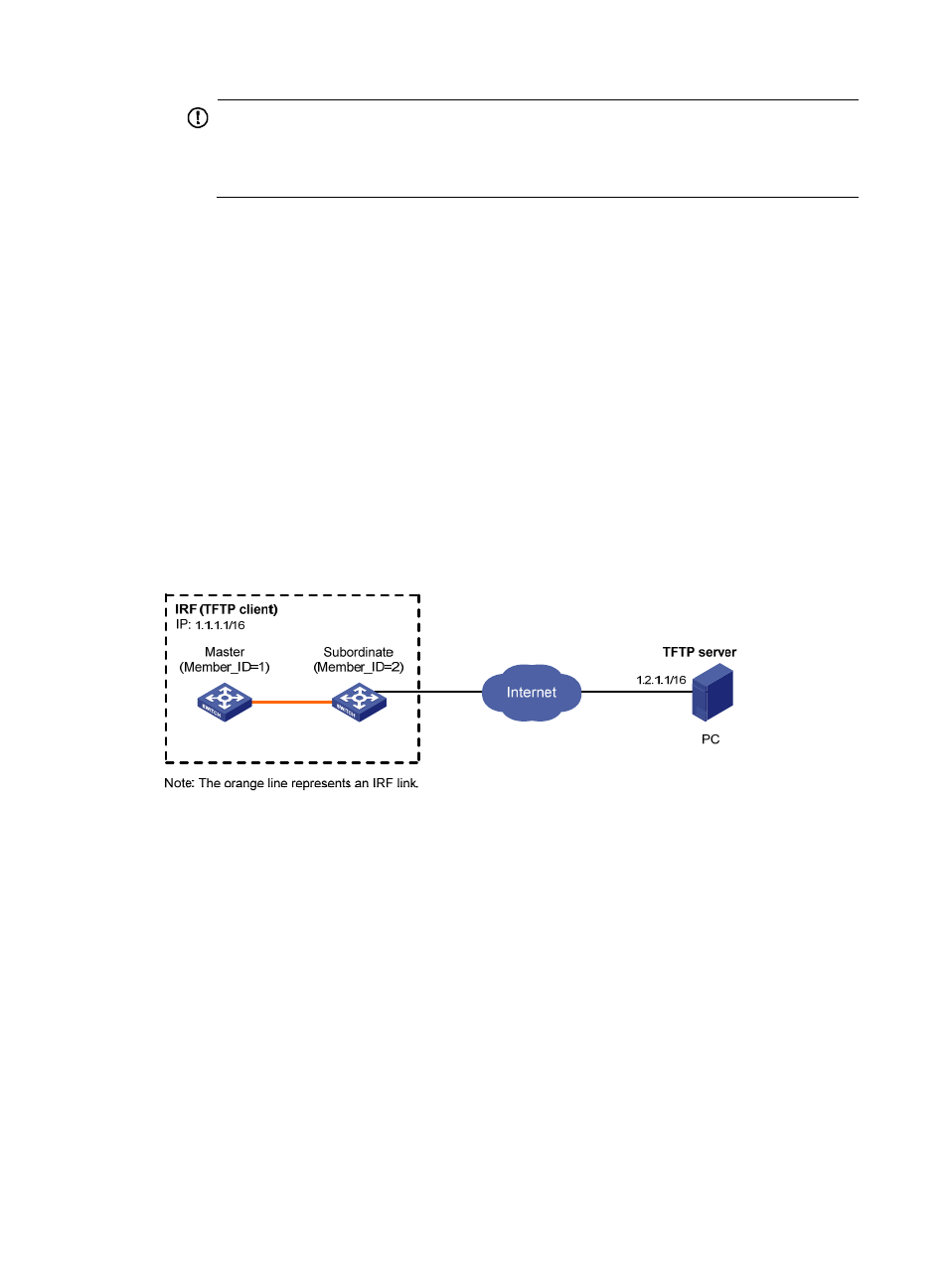Tftp client configuration example (irf mode), Network requirements, Configuration procedure – H3C Technologies H3C S12500 Series Switches User Manual
Page 96

84
IMPORTANT:
The system software image file used for the next startup must be saved in the Flash root directory.
If the storage medium is partitioned, the system software image file must be saved in the first
partition. You can copy or move a file to the Flash root directory.
# Reboot the device.
<Sysname> reboot
TFTP client configuration example (IRF mode)
Network requirements
As shown in
, an IRF fabric comprises a master and a subordinate device. The member ID of the
master is 1, and the slot numbers of the active MPU and the standby MPU on the master are 0 and 1
respectively. The member ID of the subordinate device is 2, and the slot numbers of the active MPU and
standby MPU on the subordinate device are 0 and 1 respectively. The IRF fabric and PC can reach each
other.
Use the IRF fabric as a TFTP client and PC as the TFTP server. From the IRF fabric, download a system
software image file from PC for upgrade and uploads a configuration file named config.cfg to PC for
backup.
Figure 33 Network diagram
Configuration procedure
1.
Configure the PC (TFTP server):
{
Enable TFTP server. (Details not shown.)
{
Configure a TFTP working directory. (Details not shown.)
2.
Configure the IRF fabric (TFTP client):
# Examine the storage medium of the device for insufficiency or impairment. If no sufficient free
space is available, use the fixdisk command to fix the storage medium or use the
delete/unreserved file-url command to delete unused files. (Details not shown.)
# Download application file newest.bin from PC to the master and subordinate devices.
{
Download application file newest.bin from PC to the root directory of the storage medium on
the active MPU of the IRF fabric.
<Sysname> tftp 1.2.1.1 get newest.bin